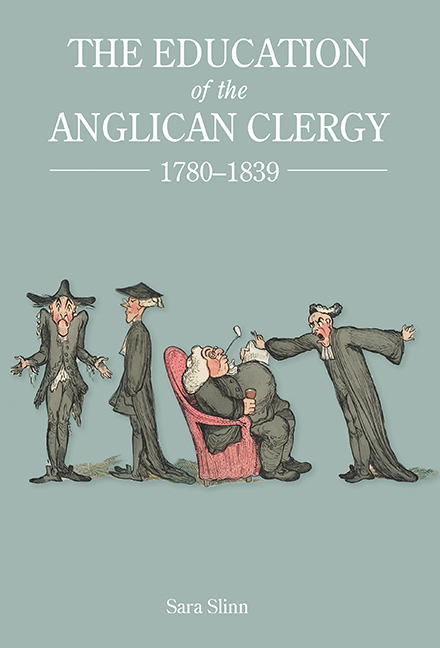Book contents
- Frontmatter
- Contents
- Illustrations
- Acknowledgements
- Abbreviations
- Introduction
- Part One Entrants to the Clerical Profession, 1780–1839
- 1 Recruitment to the Established Church
- 2 Episcopal Ordination: Policy and Practice
- Part Two Routes to Ordination
- Conclusion
- Appendix 1 Ordination Profiles of Bishops, 1780–1839
- Appendix 2 A Note on Methodology
- Bibliography
- Index
- Miscellaneous Endmatter
2 - Episcopal Ordination: Policy and Practice
from Part One - Entrants to the Clerical Profession, 1780–1839
Published online by Cambridge University Press: 30 August 2017
- Frontmatter
- Contents
- Illustrations
- Acknowledgements
- Abbreviations
- Introduction
- Part One Entrants to the Clerical Profession, 1780–1839
- 1 Recruitment to the Established Church
- 2 Episcopal Ordination: Policy and Practice
- Part Two Routes to Ordination
- Conclusion
- Appendix 1 Ordination Profiles of Bishops, 1780–1839
- Appendix 2 A Note on Methodology
- Bibliography
- Index
- Miscellaneous Endmatter
Summary
There were, then, substantial regional variations in the educational history of ordinands. Within this context, how did individual bishops negotiate the line between the wishes of the incumbents offering titles, their own personal concept of fitness for orders, and the labour needs of their dioceses? A close examination of those dioceses where the proportions of graduates and non-graduates who were admitted changed very significantly over the period – that is, those in the Northern Province and Wales, as well as the two Southern Province dioceses of Hereford and Norwich – will illuminate the contrasts and continuity in episcopal practice.
Canon law and the ordinand: the minimum standard
The basic touchstone of episcopal ordination practice was Canon 34. This required that an ordinand:
hath taken some degree of school in either of the said Universities; or at the least, except he be able to yield an account of his faith in Latin, according to the Articles of Religion approved in the Synod of the Bishops and Clergy of this realm, one thousand five hundred sixty and two, and to confirm the same by sufficient testimonies out of the holy Scriptures.
This is not to say that there were no attempts to raise the academic skills and knowledge of the clergy above this basic level, in order to fit them better for an active role in what was a learned – and learning – occupation. Oaths taken at ordination committed clergy to a life of ongoing study, and bishops often exhorted their clergy to remember this commitment. Similarly, in the provision of the ‘ten-year statute’ at Cambridge University, post-ordination distance-learning was made available to non-graduate clergy. And, from time to time, attempts were made to impose entry qualifications above and beyond the canonical minimum. Jeremy Gregory has shown that during the seventeenth and eighteenth centuries, a series of archbishops of Canterbury circulated instructions to their suffragans in the Southern Province concerning the maintenance of ordination standards. Archbishop Sancroft went beyond this in his 1685 Articles for the better regulation of ordinances, stipulating that only graduates should be ordained except in special cases, of which he would be the judge, although the import of these articles should not be overstated. Only four of his suffragans were signatories, and one of them – William Lloyd of St Asaph – had strong reservations about the practicality of the policy.
- Type
- Chapter
- Information
- The Education of the Anglican Clergy, 1780–1839 , pp. 75 - 106Publisher: Boydell & BrewerPrint publication year: 2017



